A massive man-made structure surrounded by green pastures emerged from afar, in the eastern part of Semarang near the city’s suburban region with a volcano lurking from behind. Four pointy small minarets stood on an elevated platform, flanking a white dome over the terracotta-colored roof tiles below. Together they formed a pyramidal structure, designed to impress and built to last. At the far end of the grounds stood a lone tower much bigger and bulkier than the four, 99 meters high symbolizing the 99 good names of Allah.
The Grand Mosque of Central Java might seem rather out of place as the main mosque for the provincial capital due to its location, 6 km away from the city center. But one needs to look beyond the surface to learn its history and understand the reason behind this strange choice of location.
Once a waqf asset – donated asset held by a charitable trust – of Semarang’s older Kauman Mosque, the land on which the Grand Mosque now stands was deemed unproductive by the managing organization. Later on through an agreement it was sold to a private investor who gave a land in Demak, some 30 km east of Semarang, as a compensation. Following public outcries, countless efforts were done to overturn the deal. However it took many years before the land was successfully reinstated to the city’s ownership, though the indemnity given to the private investor was not openly disclosed.
As a token of gratitude, a grand mosque was planned to be built on a small fraction of the land, and in 2006 after four years of construction the mosque was finally inaugurated. Javanese architectural elements were apparent on the roof shape and the various patterns used to decorate corners of the mosque; while Arab influence was evident in the abundance of calligraphy, the use of dome on top of the main praying hall, also the four giant mechanical umbrellas. The latter were inspired by the giant umbrellas at the Prophet’s Mosque (Masjid al-Nabawi) in Medina, Saudi Arabia.
That morning, however, the mosque was not my main focus. I was rather on a mission to know Semarang’s prominent places of worships better, apart from the elegant Blenduk Church in the old town district which I had visited several times.
Less than 20 km south of the Grand Mosque lied a magnificent pagoda sitting next to a vihara (Buddhist temple) in Watugong on a hill in Upper Semarang, a telltale of the city’s thriving Chinese community. Despite the bustle from a road renovation work outside, the temple compound itself was shrouded in a peaceful ambiance where a gilded Buddha statue rested under a big Bodhi tree, perched on one side of the walkway between the pagoda and the vihara. The statue itself looked more Southeast Asian than East Asian, curiously.
“Are you coming alone?” an old man suddenly appeared from inside the pagoda and posed the question to me.
“Why don’t you come with your girlfriend?” he continued after noticing that I came alone. “Many young couples come here to have romance. Is that allowed in mosques?”
His tone clearly indicated a sense of frustration for the indifference of many young couples doing improper things in the supposedly sacred place. Minutes later, after showing sympathy and explaining him about my stand point, he started to soften his voice and tell me the history of the pagoda.
Commissioned by one of the city’s richest men, the pagoda was also inaugurated in 2006 and up to this day it still holds the record as the tallest pagoda in Indonesia at 45 meters. Seven storeys high, the pagoda was embellished with Chinese ornaments including the statues of Kwan Im/Guanyin, the boddhisatva of compassion venerated mostly by East Asian Buddhists. Most of the statues, stone carvings and decorative lamps were imported from China to ensure the authenticity of the Chinese elements, the old man explained.
“He was so rich that he wanted to present a pagoda for the city. He trusted me with the money for the construction,” he recounted.
What a seemingly cordial conversation turned a little bizarre when he started telling me stories about his unmarried children, his disgust on the liberal way of life he saw in New York City upon his visit, and his questions about my own life. Thinking a way to end the conversation politely, I fixed my eyes to a series of beautifully carved ancient Chinese characters surrounding the base of the pagoda, then made an excuse to take some photographs of them.
“You have the eyes for details,” he commented when he saw me squatting in front of the stone carvings. “You must be someone who is very careful in choosing a wife.”
Baffled by his statement all I could do was to smirk. Fortunately he then went back to the pagoda and left me alone, briefly occupied with the intricate details of the Buddhist structure until the sun rose even higher.
Just before I left the parking lot, I saw the old man again and waved at him to bid farewell. On my way home it was not his statements that bothered my mind, but his frustration towards people’s indifference and lack of sensitivity. Too often we take things for granted, especially when we are not a part of a minority group. But history proves that all over the world such mundane and seemingly insignificant situation could create frictions in society, and far more serious incidents if not dealt with properly.
In general Semarang has a relatively healthy level of religious tolerance among its diverse demographic, despite the incidents the old man told me earlier. Muslims, Christians, Buddhists, Confucianists and Javanists – those who adhere to a traditional belief rooting to animism – thrive in this city and finding people with different religions in one big family is not a rarity. Nevertheless in a world like this where religious conflicts occur in daily basis around the globe let us remind ourselves the importance of tolerance to create harmony, which in turn brings peace, stability, and eventually prosperity. Hopefully.
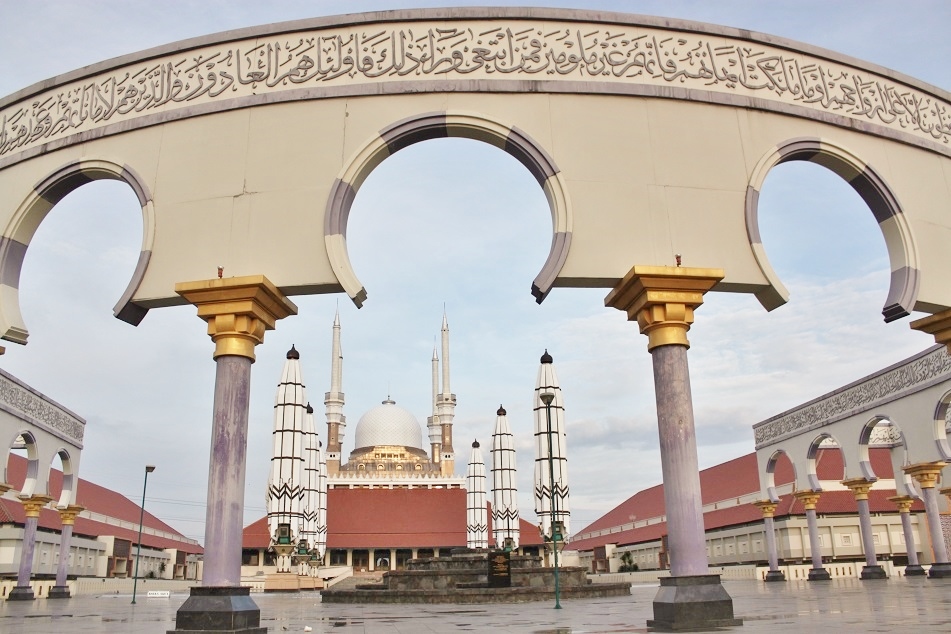
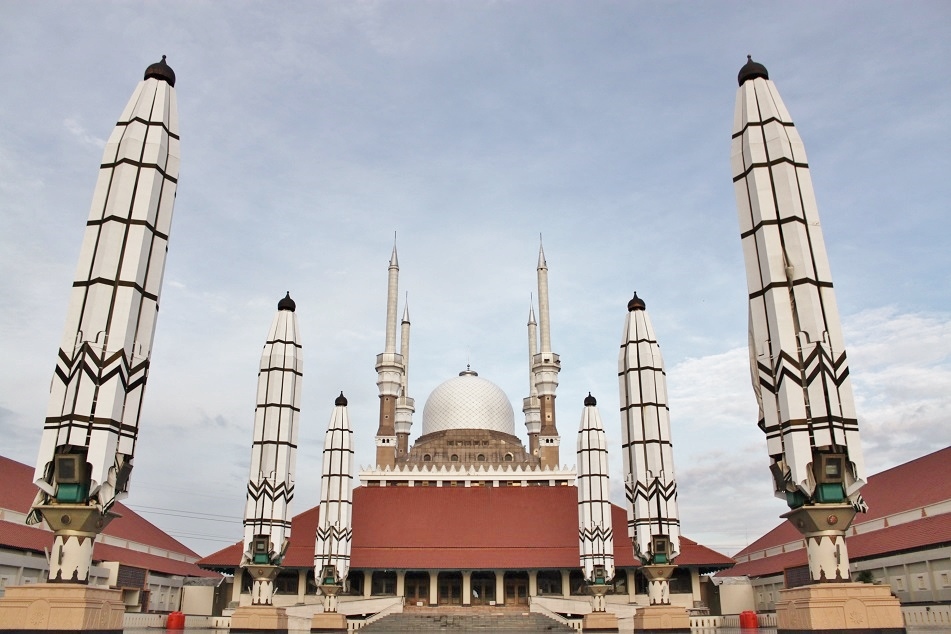

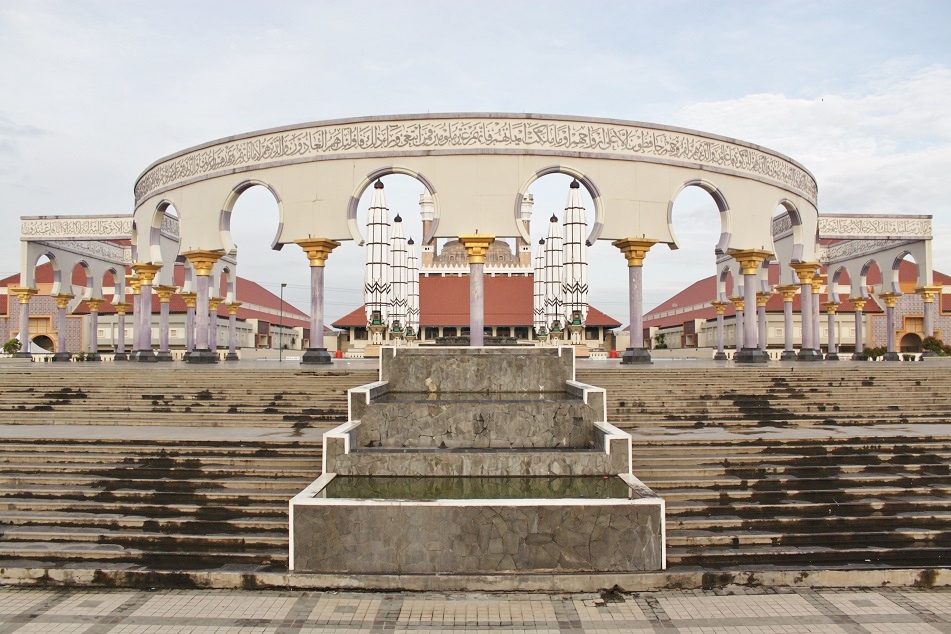
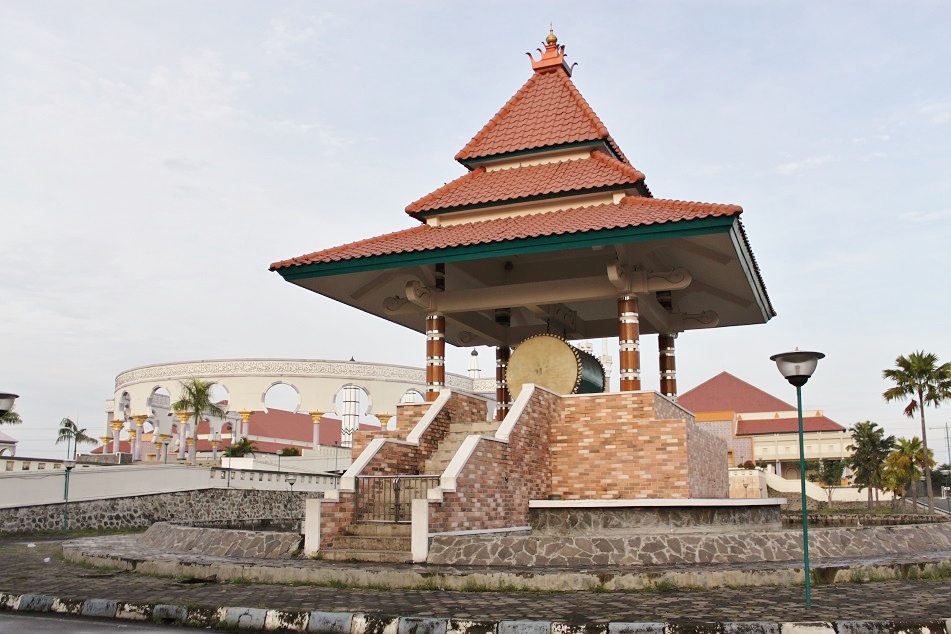
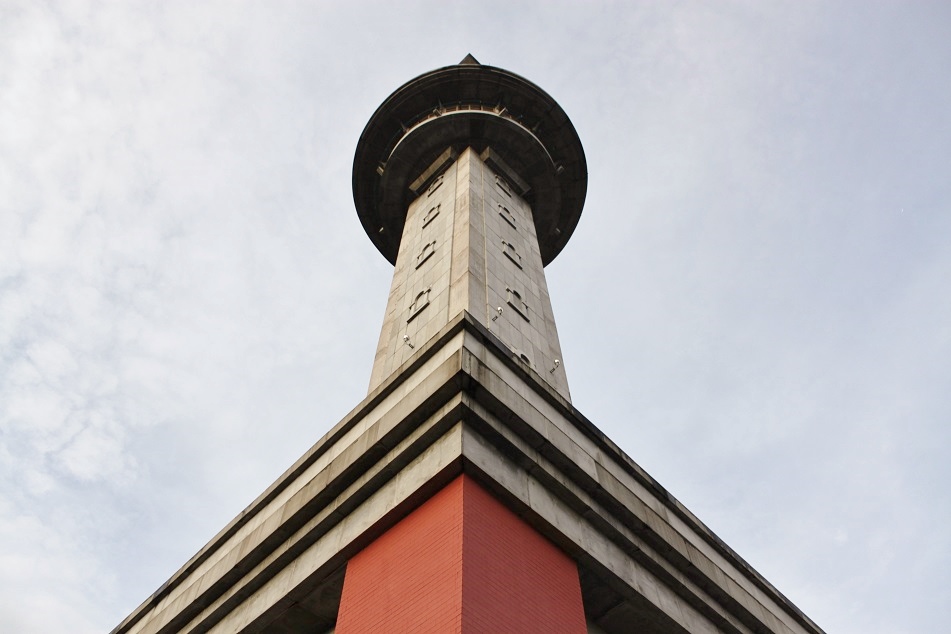
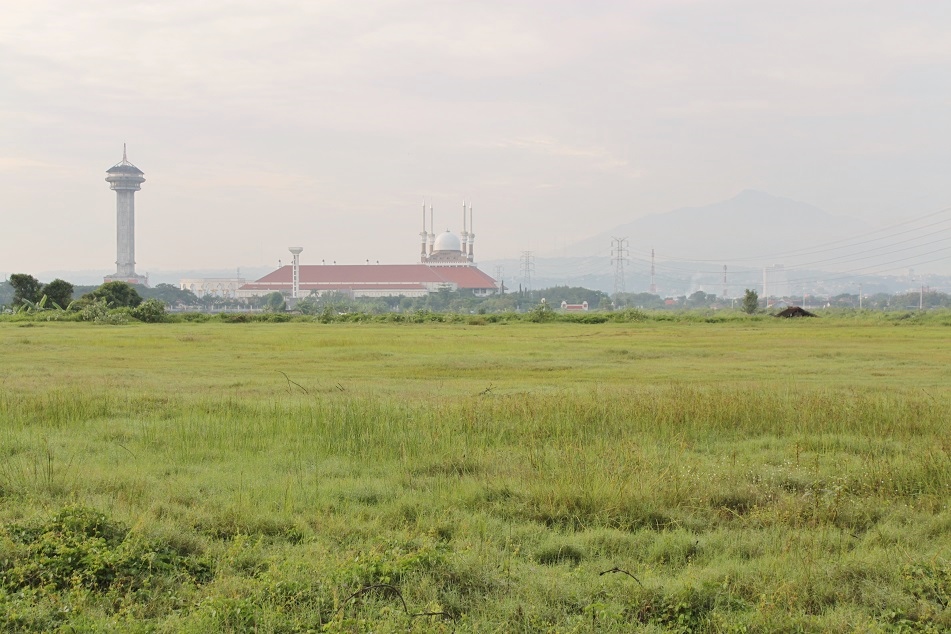
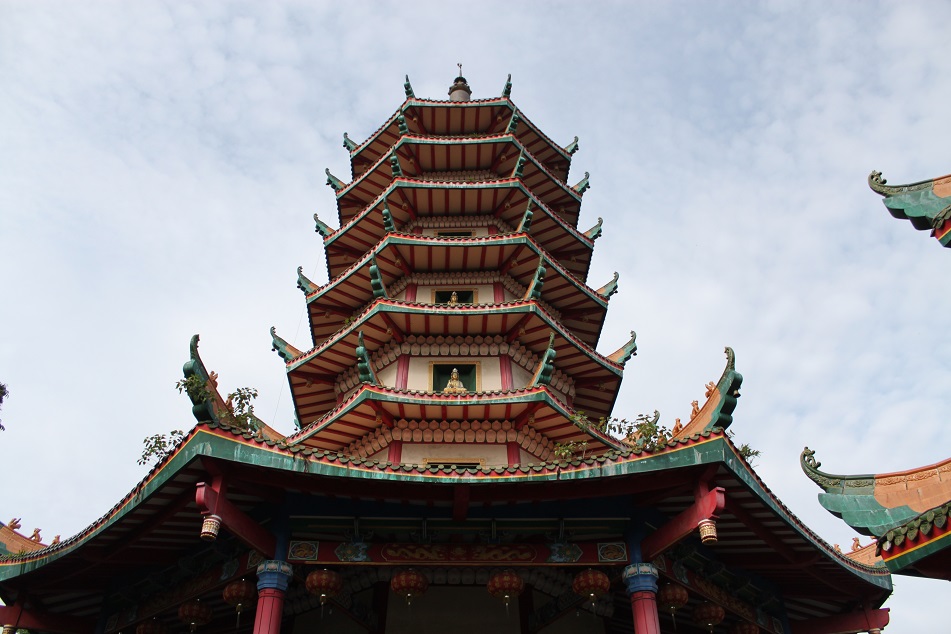
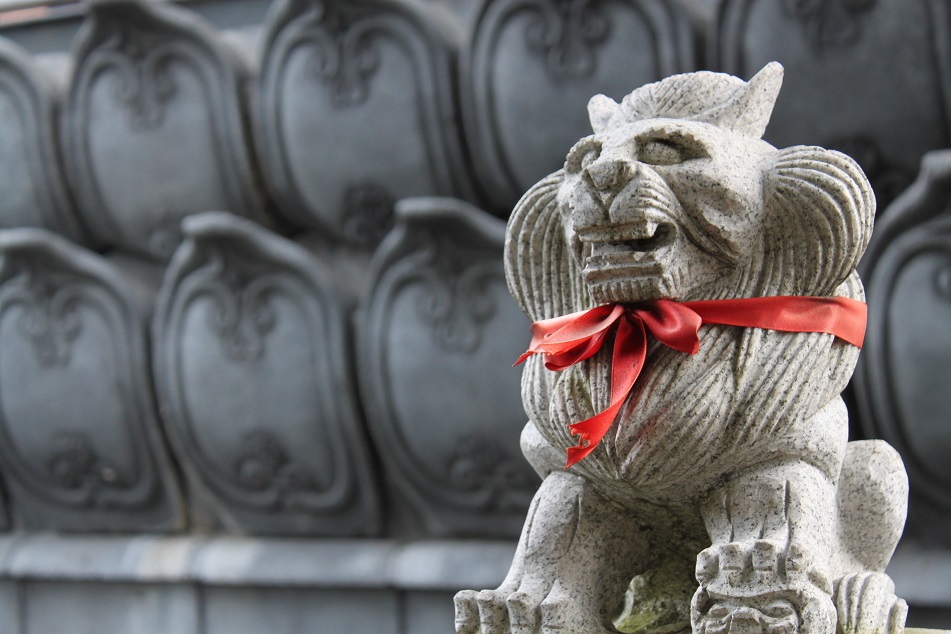


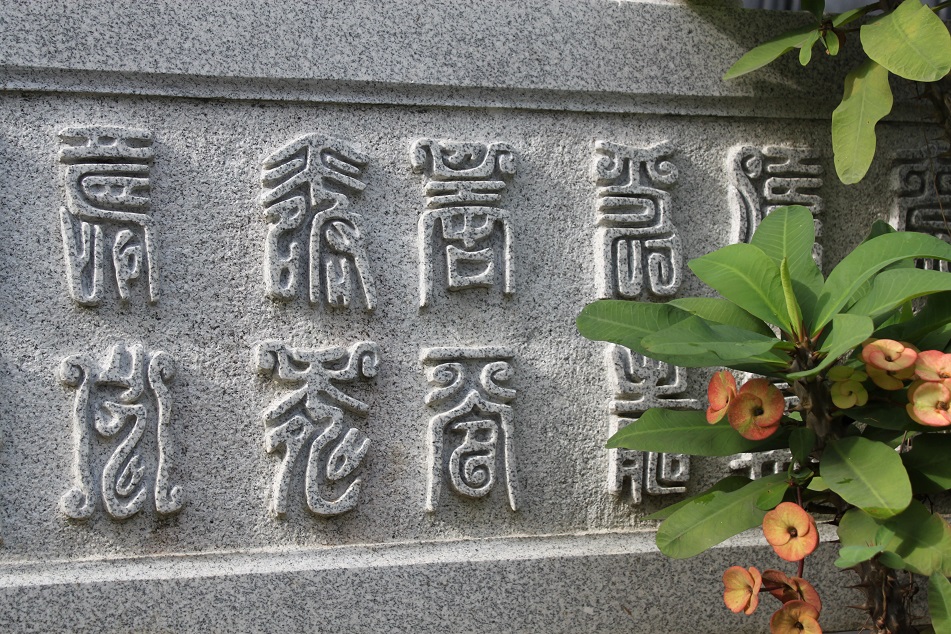
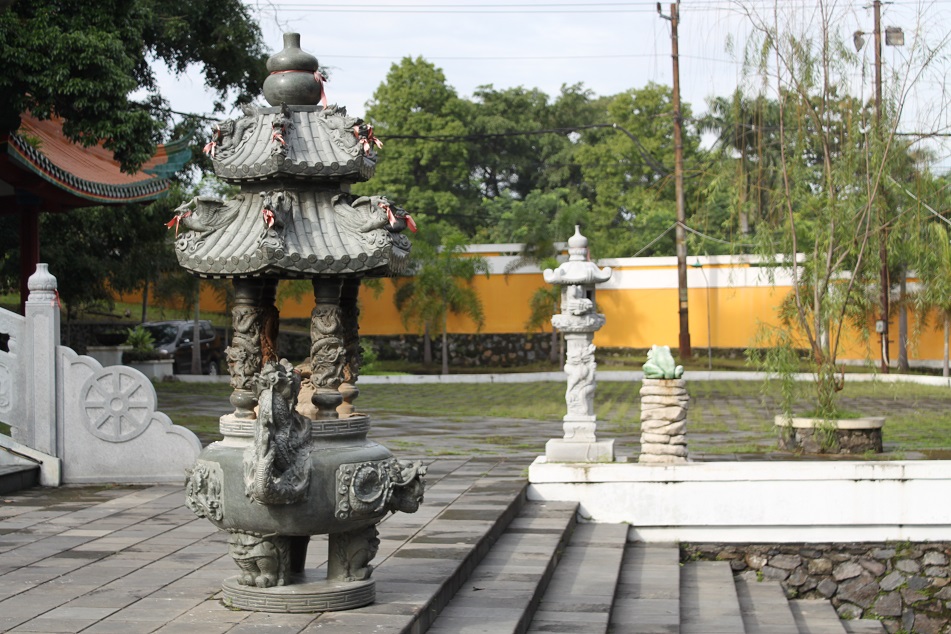

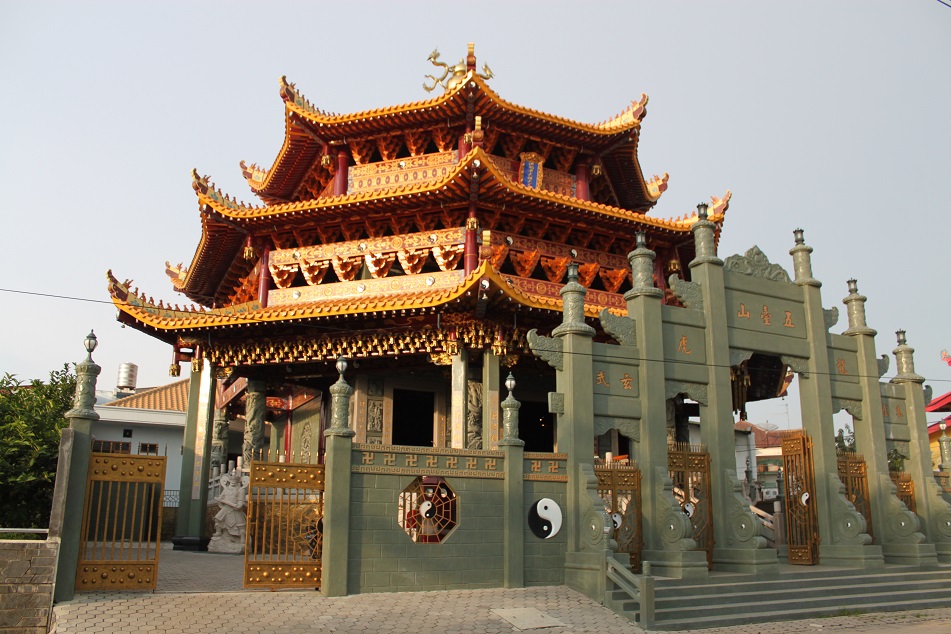
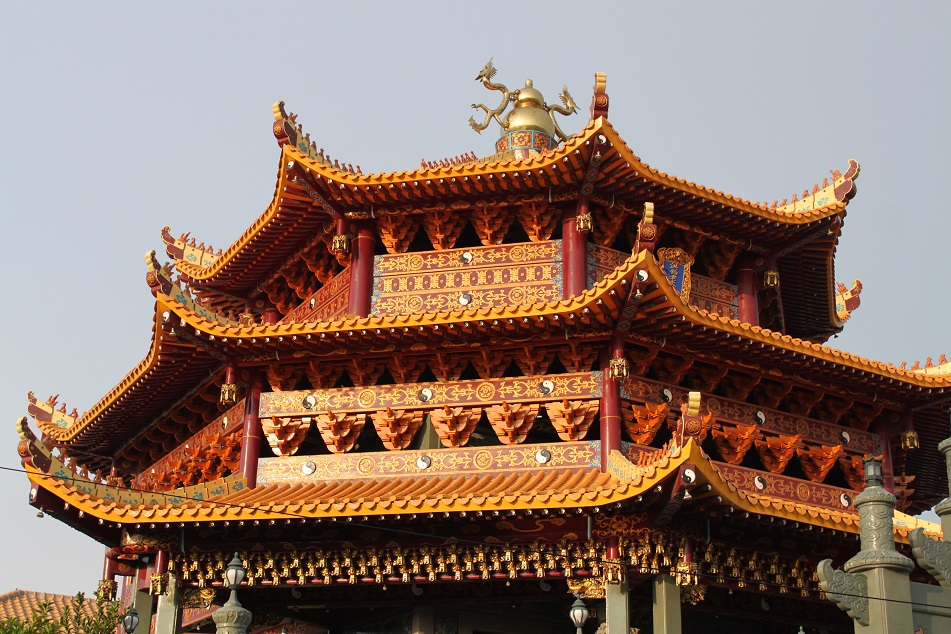

Great photos and write-up Bama, the third shot and the reflection left me staring for a while ~ one great thing about photography is that ability to generate some interesting conversations, even while some are quite bizarre. Enjoyed the read.
LikeLike
Thanks Randall. Indeed, many people tend to find it amusing to see a stranger strolling around them with a camera in his hand. That amusement is often the door to interesting, and at times bizarre, conversations.
LikeLike
Bama, what lovely shots! I imagine the view from the 99m tower at the Grand Mosque must be spectacular – is it open to the public? Reading about your conversation with the old man made me chuckle, I guess he was lonely and appreciated having someone else there for a rant. And the ornate incense burner reminds me so much of the ones I saw in Beijing. Those colourful, almost gaudy temples are such a contrast to the austerity of the mosque!
LikeLike
Thank you James. Actually the tower is open to the public, but I came way too early so it was still closed. I guess you’re right about that old man, although I’d prefer to meet an old man like the one we met in Ham Tin Wan. 🙂 Despite the mosque’s austerity, it’s still far more ornate than Istiqlal in Jakarta, which is basically just a massive structure made of steel and concrete.
LikeLike
Aargh… reminds my foolishness of trusting the GPS than people! It brought me to Grand Mosque of Semarang instead of the Grand Mosque of Central Java hahaha…
LikeLike
Actually you’re not alone because some people also mistaken that mosque with the Grand Mosque of Semarang. It’s understandable though. 🙂
LikeLike
Kalau ada orang yang stereotyping bahwa suku Tionghoa di Indonesia selalu kaya raya dan diuntungkan secara ekonomi, mungkin bisa berkunjung ke daerah sekitar Kuil Tay Kak Sie itu, Banyak penduduk asli berdarah Tionghoa hidup miskin dan terpinggirkan.
Saya belum sempat ke Masjid Agung Jawa Tengah. Pasti butuh upaya besar juga untuk merawat & menghidupkan masjid semegah itu. Lumut-lumut di sekitar tangga pelataran masjid (di foto) agak mengganggu pemandangan 😛
LikeLike
Betul! Mereka hidup di pinggir kali yang gak bisa dibilang bersih juga, dan rumah-rumahnya pun terhitung sederhana di area padat penduduk. Tapi who knows, di sekitar Asemka atau Glodok kan rumah-rumahnya juga gak banyak yang bagus tapi justru memang sengaja dibuat demikian supaya dari luar terkesan pemiliknya hidup sederhana. Ini pengalaman yang banyak diceritain temen dan kolega saya yang pernah berhubungan dengan mereka.
Yah, ‘penyakit’ di Indonesia kan memang gitu. Bisa bangun bangunan besar dan megah, tapi untuk urusan perawatan suka terabaikan. Sayang memang.
LikeLike
Saya rasa agak berbeda konteksnya antara di Semarang dan Asemka Glodok. Di Jakarta meski, seperti cerita Bama, hidup sederhana, mereka hidup di hub bisnis, di nadi bisnis. Jadi secara esensi (baca: rekening bank) mereka memang kaya. Sementara di Semarang, laju perputaran uang lamban. Kurang oke untuk bisnis menurut kolega yang pernah menangani pemasaran produk di sana. Konon orang Semarang jarang jajan, ga suka makan, atau belanja. Jadi saya pikir penduduk yang ‘tampak’ miskin di sekitar kuil itu memang tak punya pilihan.
LikeLike
Kan saya bilang “who knows”. Karena berdasarkan pengalaman saya di bank, terutama bank yang sebelum tempat saya kerja sekarang, mereka punya bukan kantor cabang pembantu, tapi kantor cabang utama di area Gang Lombok, which is sekitar Tay Kak Sie. Dan bank tempat saya kerja dulu terkenal gak sembarangan membuka cabang, apalagi cabang utama.
Mengenai karakter orang Semarang secara umum memang benar, kurang suka jajan, apalagi kalau harganya (menurut mereka) terlalu mahal. “Nasi goreng doang kok harganya segini” atau komentar sejenis sering saya dengar dari orang Semarang yang makan di Jakarta. 🙂
LikeLike
Akhirnya para pebisnis kuliner larinya ke Jogja sama Solo deh 😀
LikeLike
@Matius Teguh Nugroho: Yoi. Tampaknya begitu 😀
LikeLike
Bama that reflection photo in the marble is mesmerizing. As always such an interesting write up and astounding photos.
LikeLike
Thank you Sue. I was lucky that it rained the previous night. 🙂
LikeLike
Reblogged this on belajar menulis and commented:
Mesjid Nabawi nya Indonesia 🙂
LikeLike
Baru pertama lihat gambar yang kuil di Kaliasin, letaknya di mana Bama? 🙂
LikeLike
Wuihh keren, mas! Udah jadi top blogger of WordPress nih (lirik banner “Featured on Freshly Pressed”)
Baru tahu Masjid Raya Jawa Tengah ternyata keren bgt. Kayak yang di Medina, punya payung-payung canggih kayak gitu.
Tulisan ini menginspirasi kita semua untuk lebih menghargai eksistensi sebuah bangunan sebagai tempat ibadah, bukan sekedar objek wisata atau objek foto-foto hanya karena itu bukan tempat ibadah kita 🙂
LikeLike
Haha, gak lah. Buat saya yang penting saya enjoy nulis di blog ini. 🙂
Yes, tapi sayang setelah 8 tahun diresmikan mulai keliatan tanda-tanda ‘penuaan’ di sana-sini. Thank you Teguh, mudah-mudahan pengalaman singkat saya bisa jadi bahan renungan kita semua supaya gak take for granted toleransi dan harmoni yang sudah terjalin selama ini. Tetap butuh upaya terus menerus untuk menjaganya.
LikeLike
Kalo dari Jalan Imam Bonjol arah Poncol, belok kiri sebelum Poncol. Ikuti terus sampe ketemu kali/kanal di sebelah kiri. Masuk ke perumahan di sebelah kanan dan ikuti jalan utama. Nanti ada plang menuju ke wihara itu. Jalannya agak rusak tapi.
LikeLike
Noted Bama. Next time pas ke Semarang aku cari tempatnya sesuai petunjukmu 🙂
LikeLike
Mudah-mudahan gak nyasar. 🙂
LikeLike
Kak … ngak foto saat payung2 nya kebuka ??? kata ya cakep banget yaa
LikeLike
Itu payungnya memang by default tertutup. Mungkin dibuka cuma pas hujan. Iya sih, kalo pas mengembang pasti lebih bagus lagi.
LikeLike
Really impressive. Both your words and photos and the architecture.
LikeLike
Thank you Claire and Mark. That’s very kind of you to say.
LikeLike
Superb photos Bama – those are really magnificent-looking buildings. Btw, walking here and there with a huge camera does get us uncomfortably noticed, right?
LikeLike
Thank you, Ismail. Semarang does have a lot of beautiful buildings, but one of the most famous – both for good and bad things – is Lawang Sewu. I’ll write about that soon. As for carrying big camera around, even though I’ve been carrying my camera since 2010 but until now I often feel uncomfortable taking photos with a camera with such size. A smaller camera would be less conspicuous. 🙂
LikeLike
Reblogged this on laiainlovewithlove and commented:
just amazing
LikeLike
Hi! Love your posts! Anyways, I’m trying to start my own travel blog here. Any tips or advice on how to make it big? (: thank you!
LikeLike
Thank you! My only advice would be to write your posts consistently so that your followers can always expect to read a post every now and then. Best wishes! 🙂
LikeLike
What an extraordinary building that Mosque is, Bama! I’d give anything to see those umbrellas up! 🙂
LikeLike
I’ve been there twice now, but I still haven’t seen its umbrellas up. Maybe next time. 🙂
LikeLike
I count on you to capture them for us Bama!
LikeLike
Thank you for the in-depth look at the religious diversity of Semarang. The mosque is magnificent and your photos do it full justice. Those umbrellas are indeed intriguing! 🙂
LikeLike
You’re welcome, Madhu. Thank you for your kind words as always. Hopefully those umbrellas are up the next time I go to the mosque. 🙂
LikeLike
Great title!
LikeLike
Thank you!
LikeLike
Thank you for sharing this story – even the smallest thing can be a source of conflict and it´s so important to remember that.
LikeLike
We, humans, are prone to defending our ego, which is exactly the main reason behind all conflicts in the world. That’s why learning history is crucial for preventing the same calamity from happening again and again, although that is not always the case. Thanks for reading, Kara.
LikeLike
Love the delicate decorative work on the pagodas!
At the sight of those mechanical umbrellas, I thought of space rockets!
LikeLike
The pagoda was such a beautiful structure, indeed. It’s a testament to the city’s multicultural society.
As for the giant umbrellas, they surely provoke our imagination. 🙂
LikeLike
I love your blog. I’m looking forward to discover Asia this year! Thank you for sharing!
LikeLike
Thank you very much! Asia is one big place to explore, but you can start in Southeast Asia as it provides everything people need: good cheap local dishes, colorful cultural sights, ancient monuments, and many more. This year I myself am planning to explore more of what the continent has to offer.
Good luck with your travels and thanks for reading!
LikeLike
Pingback: Killing Time in Semarang | What an Amazing World!